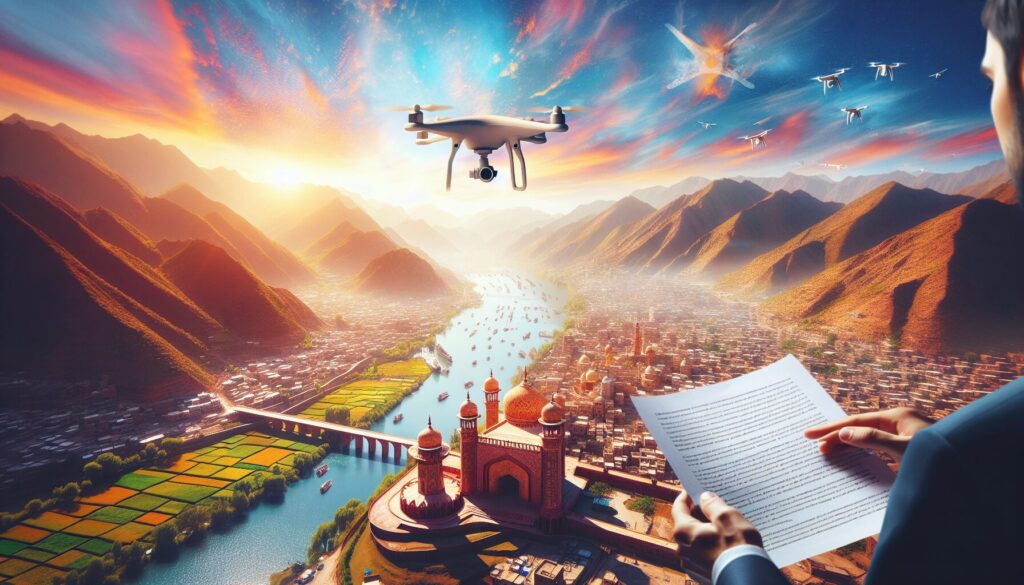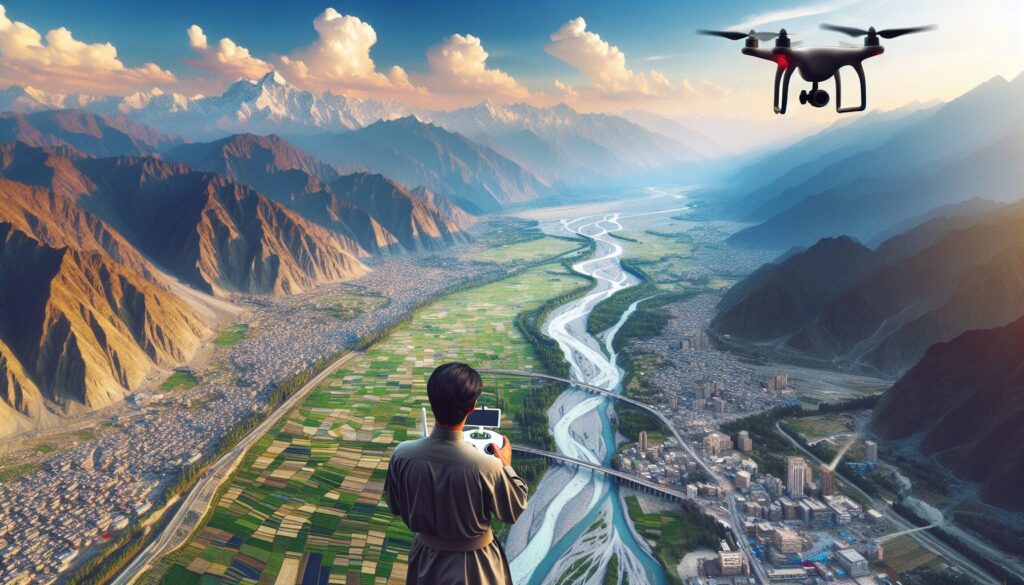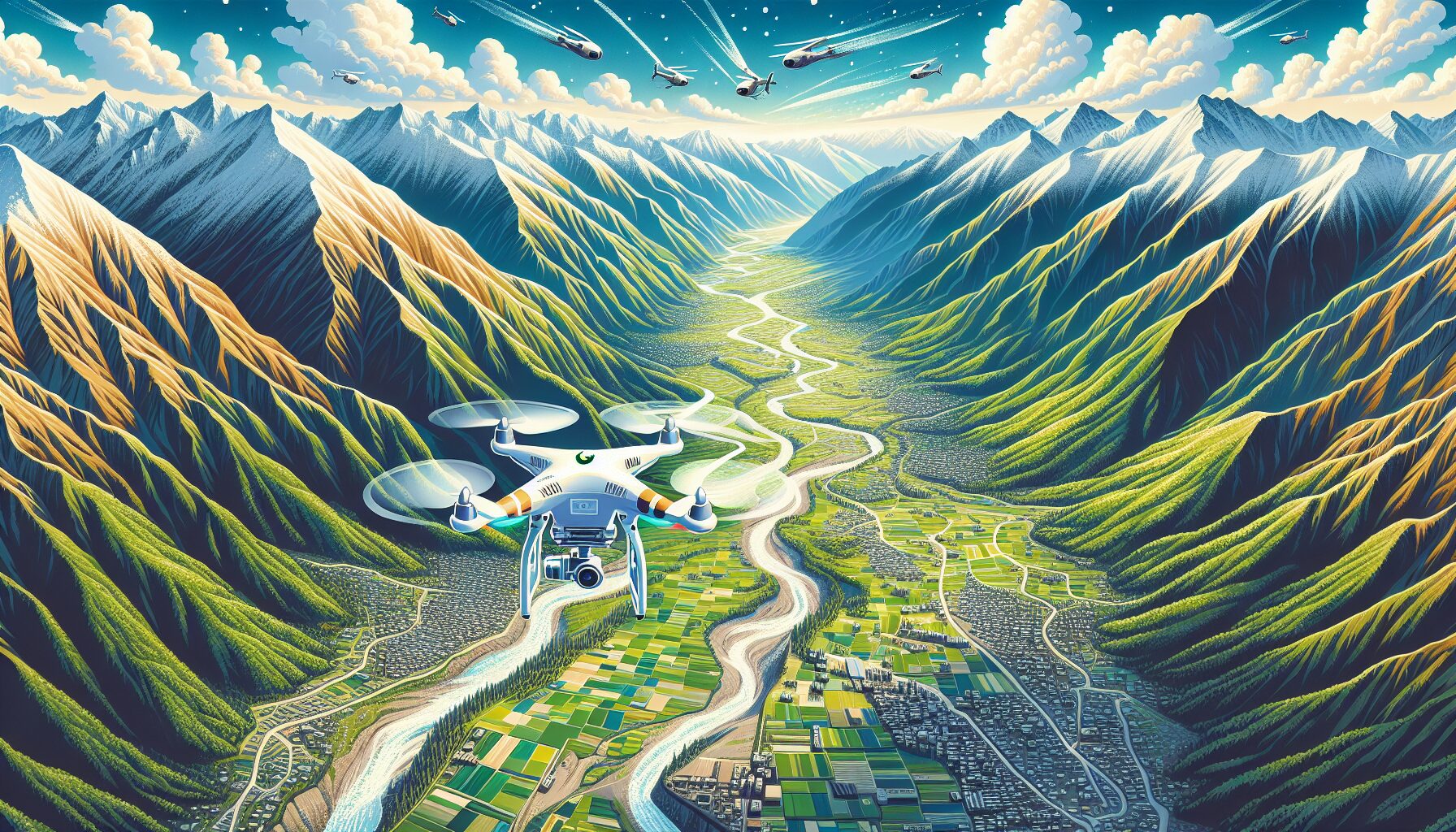Hey there, photography enthusiasts! If you’re curious about aerial photography in Pakistan, you’re in for a treat. Imagine soaring above the majestic peaks of the Karakoram or capturing the vibrant hues of Lahore from above. I remember my first aerial shoot over the Hunza Valley. Equipped with a DJI Mavic 2 Pro, I set my camera settings to ISO 100, f/11, and a shutter speed of 1/200s to ensure crisp images. The breathtaking landscapes looked even more magical through a polarizing filter, which helped reduce glare and enhance colors. Pakistan offers diverse terrains, and aerial photography opens up a whole new perspective to these stunning views. From the bustling streets of Karachi to the serene shores of Gwadar, there’s plenty to explore. Plus, organizations like Pakistan Civil Aviation Authority can provide guidance on regulations to keep in mind while flying your drone. Let’s dive into this adventure together!
Choosing the Right Equipment for Aerial Photography
When you’re diving into aerial photography in Pakistan, choosing the right equipment is crucial. I remember my first drone flight over the stunning Hunza Valley. I used a DJI Mavic Air 2, which was perfect for capturing those vibrant landscapes. Its 1/2-inch sensor and 48MP camera offered incredible detail and clarity, even from hundreds of feet up in the air. Plus, the 3-axis gimbal ensured smooth, stable shots even when the wind picked up a bit.
If you’re just starting, it’s essential to consider what you want to photograph. For expansive vistas, a drone with a wide-angle lens is a game-changer. The DJI Phantom 4 Pro V2.0, with its 20MP 1-inch sensor and mechanical shutter, is another excellent choice. It reduces distortion, making it ideal for architectural shots of Lahore’s historic sites or the urban sprawl of Karachi.
Consider Your Needs
Portability is another factor to keep in mind, especially if you plan on hiking through the Northern Areas. A compact drone like the DJI Mini 2, weighing just 249 grams, can be easily slipped into your backpack. Despite its size, it boasts 12MP photos and 4K video, perfect for capturing the serene beauty of Pakistan’s landscapes.
Don’t forget about accessories! ND filters can help you manage exposure in bright sunlight, which is often the case in Pakistan. Additionally, spare batteries are a must for extended shoots. For beginners, learning the basics of manual settings—like adjusting ISO, shutter speed, and aperture—is key. It can dramatically improve your shots, making them look more professional.
Lastly, always check the local regulations. The Civil Aviation Authority of Pakistan provides guidelines on where and how you can fly your drone legally. Keeping these tips in mind ensures a smooth journey into the world of aerial photography in Pakistan. Happy exploring!
Legal Considerations for Drone Use in Pakistan

Flying a drone in Pakistan is like embarking on a thrilling adventure, but with freedom comes responsibility. When I first took my DJI Phantom 4 up in the stunning landscapes of Northern Pakistan, I was buzzing with excitement. But I soon learned that understanding the legal landscape is just as crucial as nailing the perfect camera settings, like ISO 200 or shutter speed 1/125s for those crisp shots. Let’s dive into some key points to keep you flying safely and legally.
First things first, if you’re planning to fly a drone weighing more than 250 grams, you’ve got to register it with the Pakistan Civil Aviation Authority (Pakistan Civil Aviation Authority). Registration is a straightforward process, but don’t skip it—it’s a legal requirement. Additionally, getting the hang of the ‘no-fly zones’ is vital. Areas like airports and military installations are off-limits. You can find this information on the Pakistan Civil Aviation Authority’s site.
Understanding Local Regulations
It’s also good to know that flying over private property without permission can land you in hot water. Respect people’s privacy, and always ask for consent. When I was on a shoot in Lahore, I made it a habit to chat with locals first. It not only helped me get better shots but also made the whole experience more enjoyable and stress-free.
Moreover, consider the size of your drone. For those heavier models like the DJI Inspire 2, further permissions might be needed. Be sure to double-check what’s required, especially if your project involves commercial aerial photography in Pakistan. Staying informed will let you focus more on capturing breathtaking aerial views rather than worrying about legal hassles.
Best Locations for Aerial Photography in Pakistan
Pakistan is a treasure trove of stunning landscapes perfect for aerial photography. One of my absolute favorite spots is the majestic Hunza Valley. This place is a paradise for drone enthusiasts. When I visited last spring, I used my DJI Mavic Air 2 to capture the sweeping vistas. I set it to ISO 100 with a shutter speed of 1/60s to get those crisp, clear images. The valley’s terraced fields and snow-capped peaks make for a breathtaking shot, especially during golden hour.
Another incredible location is the sprawling Thar Desert. The endless dunes create mesmerizing patterns from above. A wide-angle lens, like a 24mm, works wonders here. Make sure to fly your drone high enough to capture the vastness of the desert. However, keep an eye on your battery life since the heat can drain it faster than expected.
Urban Landscapes and Historical Sites
For those who love urban landscapes, Karachi’s coastline offers vibrant views of the Arabian Sea. I recommend using a polarizing filter to cut through glare and enhance the colors of the sea. Don’t forget to check out our extensive cityscape photography guide for more tips on capturing cityscapes.
Meanwhile, Lahore’s Badshahi Mosque is a must-see for its architectural beauty. Flying your drone over this iconic landmark at sunset can yield some stunning shots. Use a 50mm f/1.8 lens to focus on the intricate details of the mosque’s domes and minarets. Make sure your drone settings are just right—try ISO 200 with an aperture of f/11 for optimal results.
Lastly, the serene beauty of Lake Saif-ul-Malook is unmatched. The still waters reflect the surrounding mountains, creating a mirror-like effect. To capture this, I recommend using the DJI Phantom 4 Pro, which excels in low-light conditions. It’s also crucial to be mindful of local regulations and respect nature to ensure these beautiful spots remain pristine for future photographers.
Whether you’re exploring valleys, deserts, or cities, Pakistan offers a wealth of opportunities for stunning aerial shots. Remember to plan your shoots around the best lighting conditions and always be prepared for changing weather. Happy flying and shooting!
Essential Tips for Capturing Stunning Aerial Shots

Capturing those breathtaking aerial shots in Pakistan can be an exhilarating experience, especially when you’re zooming over the stunning landscapes of Skardu or the vibrant cityscapes of Lahore. The key to success lies in understanding your equipment and the environment. Personally, I love using my DJI Mavic Air 2 for its compact size and incredible 48MP camera. It’s perfect for those spontaneous adventures! Additionally, make sure to shoot in RAW format to retain all the details. This is crucial when you’re editing later on.
When you’re out there, timing is everything. The golden hours—early morning or late afternoon—offer the best natural lighting. It’s like painting with light! However, if you’re aiming for those dramatic shadows and contrasts, try capturing around mid-day. Don’t forget to check your drone’s battery life and weather conditions before takeoff. Once, while flying over the Hunza Valley, I almost got caught in an unexpected gust of wind. Lesson learned!
Mastering Camera Settings and Composition
Understanding your camera settings can make a world of difference. For crisp and clear shots, set your ISO to 100 and aperture to around f/5.6. This combination works wonders for landscape shots. Experiment with your shutter speed; often, 1/200s is ideal for aerial photography to avoid motion blur. Furthermore, focus on composition. Use the rule of thirds to create balanced images. I remember framing the majestic Badshahi Mosque in Lahore using this technique. The results were spectacular!
Lastly, always respect privacy and no-fly zones. Some areas, like those managed by the Civil Aviation Authority of Pakistan, have specific restrictions. Being mindful ensures a safe and fun flying experience for everyone. Happy shooting!
Editing and Enhancing Your Aerial Photos
Editing your aerial photos can be just as thrilling as capturing them. It’s where the magic happens! When I first started with my trusty DJI Mavic Air 2, I quickly realized that post-processing is essential. One of the first things I do is adjust the exposure. Aerial shots often have varying light conditions, especially with Pakistan’s diverse landscapes. I usually use Adobe Lightroom. It’s perfect for tweaking highlights and shadows. Setting the ISO to 100 during shooting can help keep noise at bay, making your editing smoother.
Another tip is to play with the colors. Pakistan’s landscapes are vibrant, from the turquoise waters of Upper Kachura Lake to the golden deserts of Thar. I often enhance colors using the HSL sliders in Lightroom. This helps to bring out those striking hues. Make sure not to overdo it, though! Keep it natural.
Sharpening and Cropping
Sharpening is crucial for aerial photography. A touch of clarity can make your images pop. I typically use a moderate amount on my Canon EOS R5 files. Be careful not to over-sharpen, as this can introduce noise. Cropping is another powerful tool. Reimagining your composition can transform an ordinary shot into something extraordinary. I sometimes use cropping to remove distracting elements, drawing attention to the main subject.
Finally, don’t forget about the horizon. A tilted horizon can throw off the entire composition. Most editing software, like Adobe Photoshop, offers tools to straighten it. This simple adjustment can significantly enhance your photo’s professional look. For more advanced learning, check out tutorials from `National Geographic`. They’re fantastic for honing your skills and getting inspired.
Conclusion
To sum up, exploring aerial photography in Pakistan offers an unparalleled opportunity to capture the country’s diverse and breathtaking landscapes, from the peaks of the Karakoram to the urban sprawl of Karachi. Choosing the right equipment, such as a DJI Mavic Air 2 or Phantom 4 Pro, is crucial for obtaining stunning images. Understanding local regulations, particularly those set by the Pakistan Civil Aviation Authority, ensures safe and legal drone operations. The article highlights spectacular locations like the Hunza Valley and Thar Desert, promising captivating shots. Mastering camera settings and post-processing techniques, such as using Adobe Lightroom, can greatly enhance the quality of your aerial photos. By respecting privacy and no-fly zones, photographers can enjoy a rewarding and creative experience in this unique field. Happy shooting!
Continue Exploring
Unlock the secrets to perfect photo editing by sidestepping the most common pitfalls. Don't let simple mistakes ruin your masterpiece!
Frequently Asked Questions
What are the best locations for aerial photography in Pakistan?
Pakistan offers a diverse range of stunning locations for aerial photography, including the majestic mountains of the Northern Areas, the vast deserts of Thar, and the serene beaches of Karachi. The Hunza Valley and Skardu are particularly popular for their breathtaking landscapes, while Lahore and Islamabad offer unique urban angles.
How can I ensure safe and legal drone usage for aerial photography in Pakistan?
To ensure safe and legal drone usage in Pakistan, it is essential to follow the regulations set by the Pakistan Civil Aviation Authority (PCAA). Obtain the necessary permissions, keep your drone within line of sight, and avoid flying near airports, military installations, and sensitive areas. Always check for the latest updates on drone regulations before planning your shoot.
What tips can help beginners improve their aerial photography skills in Pakistan?
Beginners can enhance their aerial photography skills by practicing regularly and experimenting with different angles and lighting conditions. Understanding the weather patterns in Pakistan and planning your shoots during the golden hour can significantly improve your shots. Additionally, learning to use editing software will help in enhancing the final output of your images.


Leave a Reply